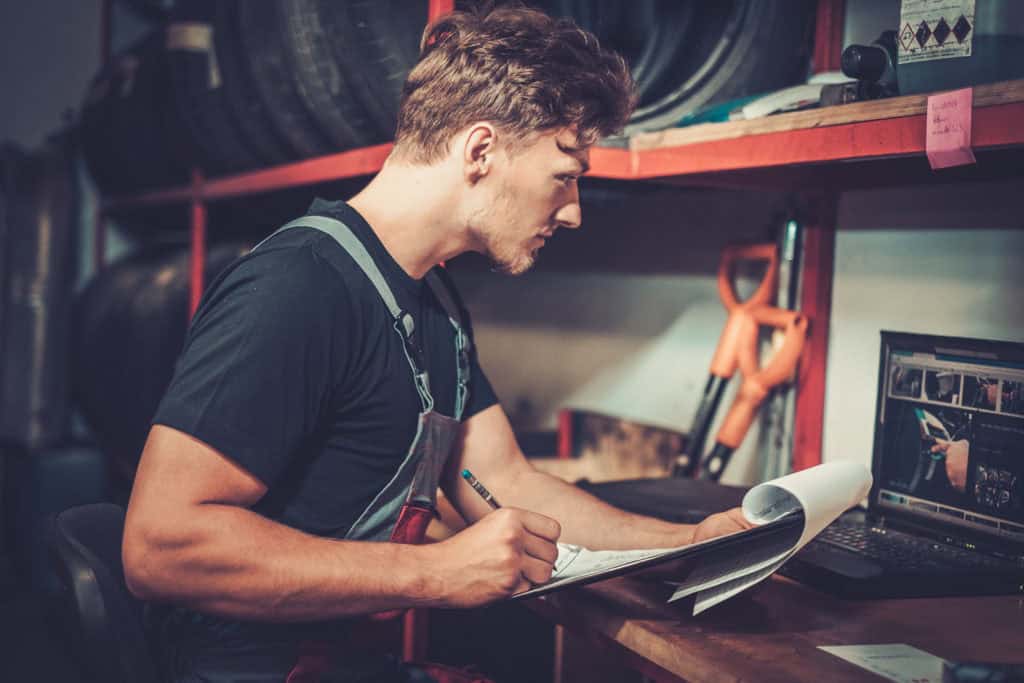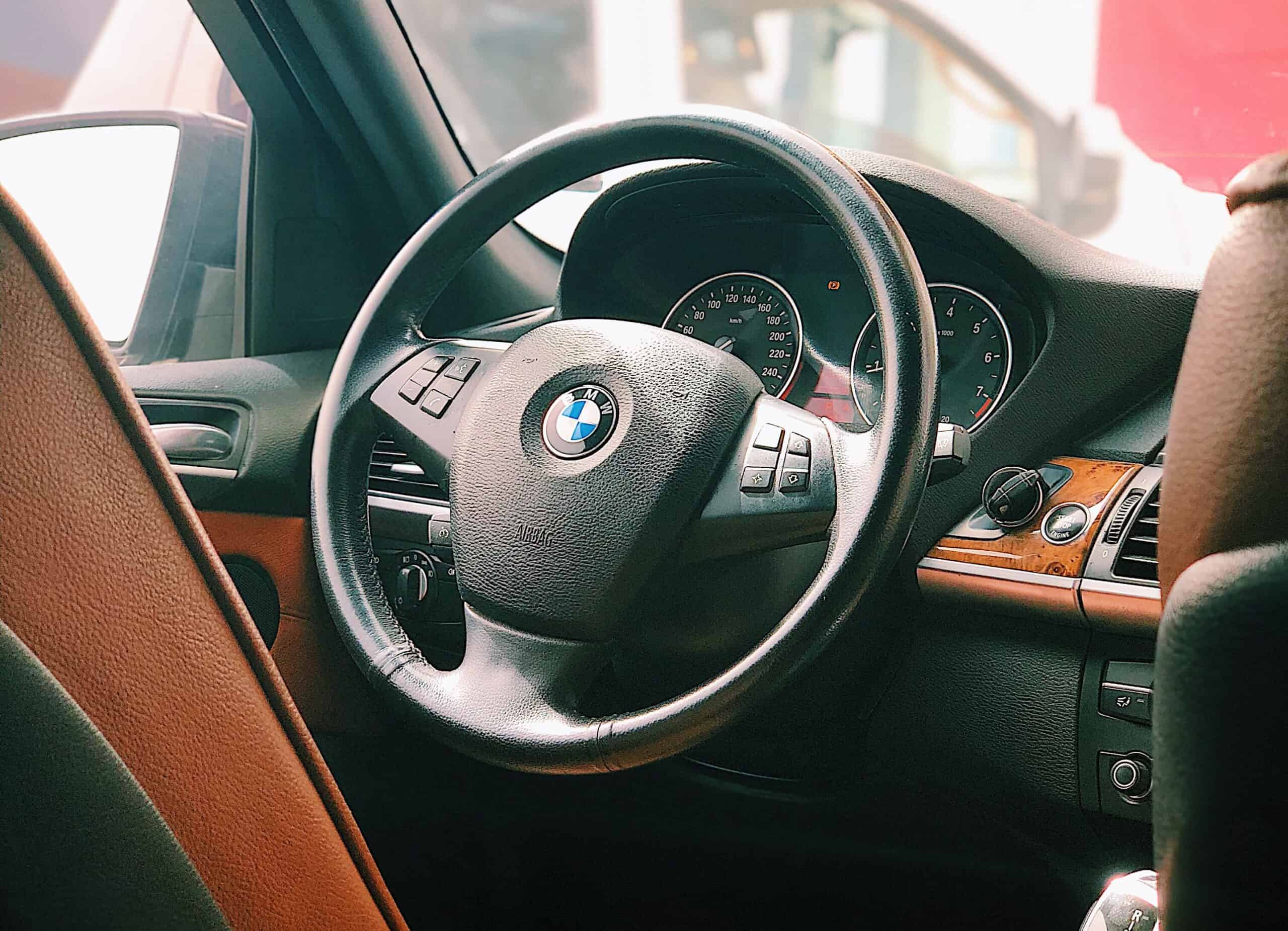Can the tires on a BMW be repaired or should they be replaced?
Tires are the foundation of safety. They must be taken care of, pressure levels checked and replaced regularly. In emergency situations, it is their characteristics that will determine the braking distance and traction. BMW pays great attention to the quality of the tires on its cars, which is why you will find puncture-resistant tires – so-called run-flats – on most vehicles.
What is a run-flat tire on a BMW?
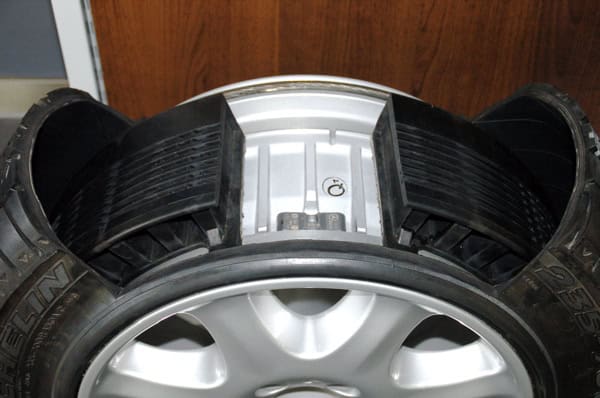
Structure of a run-flat tire
It’s important to know what kind of tires you have on your car, because if you’ve ever had a dangerous situation on the road, you know how important your safety is. BMW equips most of its cars with run-flat tires. They do this because it gives drivers several benefits:

Run-flat tire
You can continue driving on a punctured run-flat tire. A maximum of 80 kilometers can be driven and the maximum speed should not exceed 80 km/h. This means that after a punctured tire, you do not have to pull over immediately. Changing a tire on a busy highway in the dark is not the best idea. In addition:
- the tire is more stable after a puncture; run-flats work even without air in the tire, which means that steering and grip will remain almost the same
- less weight on the car; without a spare wheel and tools, the car is lighter
How to check if tires are run-flats?
All the information can be found on the side of the tire. For BMW vehicles, the most important designation is RSC:
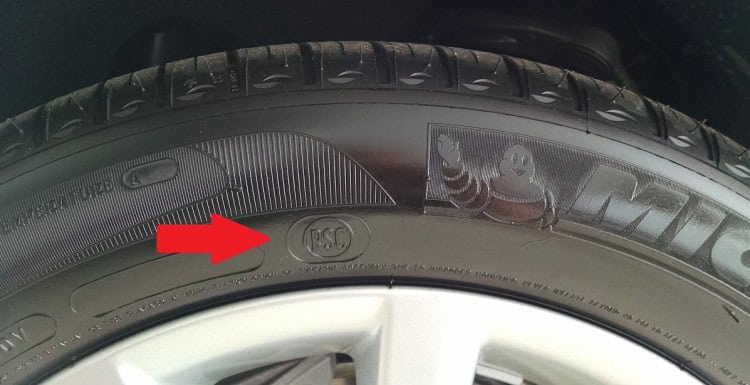
If you use run-flats without air, most manufacturers recommend replacement. The internal structure is then so compromised that they lose their properties, and therefore their safety
Repair or replace tires?
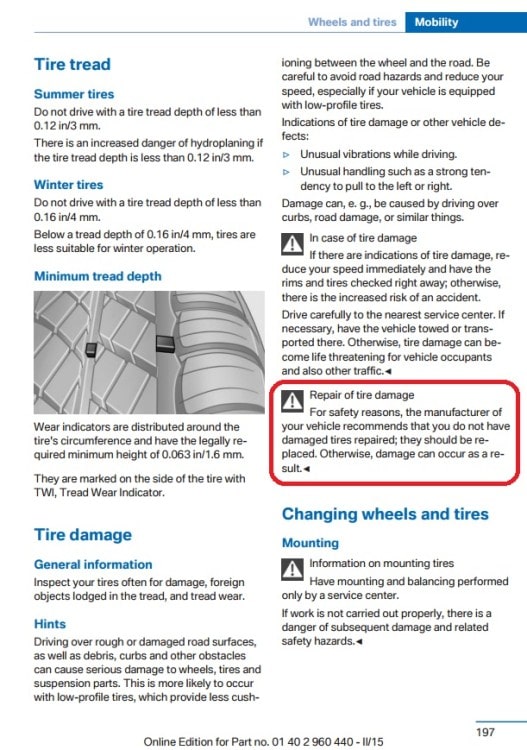
A circled paragraph from the instructions:
Repairing damaged tires
For safety reasons, the manufacturer (BMW) recommends that damaged tires should not be repaired. They must be replaced. Further damage, accidents can be caused by damaged tires
If you have standard tires and they are damaged, they can be repaired when the following items are met:
- The tire was not used without air (no driving on a hole and flapped tire).
- The damage is only on the tread, side damage eliminates the tire completely.
- The damage is no more than 0.5 centimeters.
Proper tire repair should be done in a workshop and involves filling the damage from the inside and gluing a patch over the filling. Never patch a tire with an independent patching kit. Such a repair does not provide for professional inspection. Self-patching is only treating the symptoms and not the cause. A full diagnosis at a workshop will balance the tire and check its internal and external structure.

If the above criteria are not met – replace the damaged tire. When replacing it, don’t forget to check the other wheels, which may also have been damaged. Michelin recommends replacing all wheels at the same time so that there are no differences in wear. It is also worth remembering that when replacing a single tire or a pair of tires, check their size and type so that there are no significant differences. These can translate into handling and traction.
Saving money must not be done at the expense of safety
If you ever have doubts about the quality of a tire – replace it. Safety is always a priority for you and your passengers.

